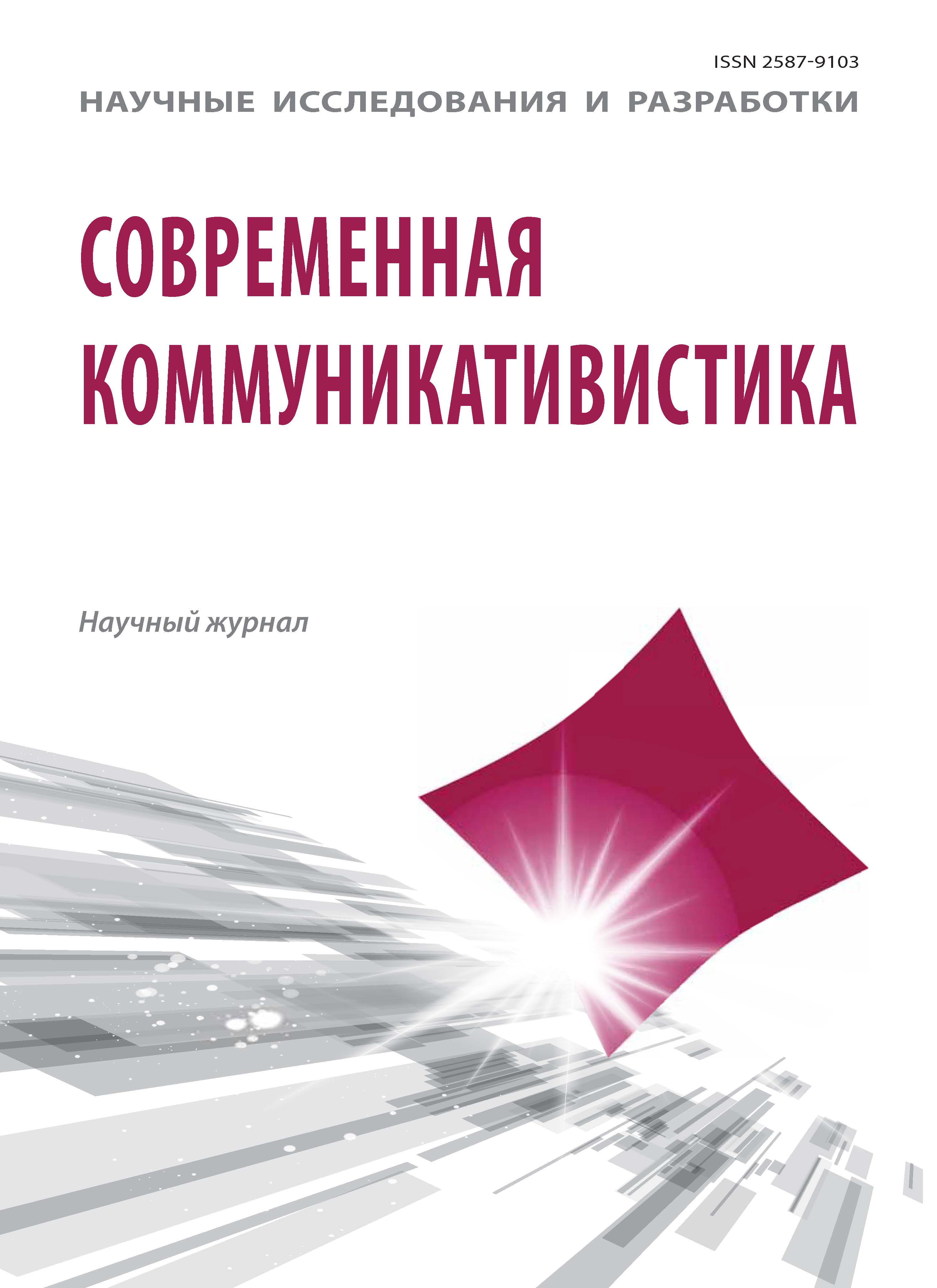Russian Federation
Lomonosov Moscow State University (professor)
UDC 81
Due to the current geopolitical situation, research aimed at studying the information war waged in the media space is relevant. The article examines the invectives with which military journalists create an image of the enemy in conditions of not only military, but also information confrontation. The research material was ten Telegram channels of war correspondents, which made it possible to consider a specific cross-section of the current communicative situation concerning their own and strained relations with the collective West, from the point of view of influencing the audience through linguistic means. 154 examples of invectives used by the authors of Telegram channels in the course of commenting on the military conflict were revealed. The methods of linguistic stylistic, lexico-semantic and contextual analysis are used. The results of the study showed that the image of the enemy is created using a variety of linguistic means carrying an invective function. The image of the enemy is also based on stereotypical ideas formed about a particular nation or political leader.Understanding the mechanisms of creating an enemy image can help reduce the "degree of tension" of mass communication media, including recognizing manipulations of enemy media, contributing to the linguistic security of the media space.
Image of the enemy, linguistic stylistic means, media communication, mass media, stylistics, invectives, media security, war correspondents, information warfare
1. Atavova R.A. Invektivnaya leksika kak sredstvo vyrazheniya yazykovoy agressii (na materiale dagestanskih periodicheskih izdaniy) [Tekst] / R.A. Atavova // Filologicheskie nauki. Voprosy teorii i praktiki. — 2016. — № 5-3. S. 77–80. EDN: https://elibrary.ru/VSMFWL
2. Barebina N.S. Argumentativnyy potencial neogennoy leksiki (na materiale tekstov SMI, osveschayuschih rossiysko-ukrainskie otnosheniya) [Tekst] / N.S. Barebina // Evroaziatskoe sotrudnichestvo: gumanitarnye aspekty. 2017. — № 1. — S. 176–188.
3. Vashik K. Metamorfozy zla: nemecko-russkie obrazy vraga v plakatnoy propagande 30–50-h godov [Tekst] / K. Vashik. — M.: Izd-vo OGI, 2005. — S. 191–230.
4. Gerasimova M.N. Formirovanie obraza vraga sredstvami ocenochnoy nominacii (na materiale sovremennogo politicheskogo diskursa). Problemy porozhdeniya i vospriyatiya rechi. Materialy XII vyezdnoy shkoly-seminara [Tekst] / M.N. Gerasimova. — Cherepovec: Izd-vo Cherepoveckogo gos. un-ta, 2014. — S. 93–99. EDN: https://elibrary.ru/TPQSFL
5. Zinkovskaya L.S. Yazykovaya reprezentaciya obrazov «vrag» vs. «zaschitnik» v ukrainskih SMI (na primere voennoy hroniki informacionnogo agentstva UNIAN) [Tekst] / L.S. Zinkovskaya // Omskiy gosudarstvennyy universitet im. F.M. Dostoevskogo. — 2017. — № 3. — S. 77–82.
6. Il'yushkin V.V. Mezhnacional'noe vzaimodeystvie i rol' v nem nacional'nyh stereotipov [Tekst] / V.V. Il'yushkin // European science. — 2015. — № 5. — URL: https://cyberleninka. ru/article/n/mezhnatsionalnoe-vzaimodeystvie-i-rol-v-nemnatsionalnyh-stereotipov
7. Il'yushkin V.V. Nacional'nye stereotipy i geterostereotipy [Tekst] / V.V. Il'yushkin // European science. — 2015. № 7. — URL: https://cyberleninka.ru/article/n/natsionalnyestereotipy-i-geterostereotipy
8. Kalyuga A.A. Osveschenie pressoy krizisa v Ukraine [Tekst] / A.A. Kalyuga // Nauka o cheloveke: gumanitarnye issledovaniya. — 2015. — № 1. — S. 61–64. EDN: https://elibrary.ru/TMNIBB
9. Kalyuga A.A. Otrazhenie konflikta na Ukraine v informacionnom prostranstve stran SNG [Tekst] / A.A. Kalyuga // Nauka o cheloveke: gumanitarnye issledovaniya. — 2015. № 3. — S. 49–54. EDN: https://elibrary.ru/QILROX
10. Karpuhina T.P. «Leksika vrazhdy» kak manipulyativnyy resurs sozdaniya obraza Rossii v sovremennoy angloyazychnoy presse (v aspekte prepodavaniya angliyskogo yazyka rossiyskim studentam) [Tekst] / T.P. Karpuhina // SibSkript. — 2019. — № 1. — S. 212–222. DOI: https://doi.org/10.21603/2078-8975-2019-21-1-212-222; EDN: https://elibrary.ru/XJTYFL
11. Klincova M.N. Mediynoe konstruirovanie obraza vraga kak instrument informacionnoy voyny (na primere resursa-inoagenta «Krym.Realii») [Tekst] / M.N. Klincova // Kul'tura v fokuse nauchnyh paradigm. — 2022. — № 14–15. S. 290–294. EDN: https://elibrary.ru/BCQOOC
12. Klushina N.I. Mediastilistika i ee mesto v sovremennoy filologicheskoy nauke [Tekst] / N.I. Klushina // Zhurnal Belorusskogo gosudarstvennogo universiteta. — 2019. № 1. — S. 35–38.
13. Kozyrev G.I. «Vrag» i «obraz vraga» v obschestvennyh i politicheskih otnosheniyah [Tekst] / G.I. Kozyrev // Sociologicheskie issledovaniya. — 2008. — № 1. — S. 31–39. EDN: https://elibrary.ru/IPWLWB
14. Kolobova S.V. Osobennosti koping-strategiy zhurnalistov, osveschayuschih sobytiya special'noy voennoy operacii [Tekst] / S.V. Kolobova // Vestnik Tverskogo gosudarstvennogo universiteta. — 2023. — № 3. — S. 248–254.
15. Kostylov Yu.S. Leksicheskie sredstva sozdaniya obraza vraga: na primere tekstov sovetskoy massovoy pechati 1919–1953 gg., osveschayuschih lokal'nye i regional'nye konflikty. — 2012 [Elektronnyy resurs]. — URL: https:// elar.urfu.ru/bitstream/10995/3881/2/urgu0925s.pdf? ysclid= ltred0m9v9280261545
16. Lugueva R.G. Yazykovye osobennosti sozdaniya obraza vraga v rossiyskih i zapadnyh SMI [Tekst] / R.G. Lugueva // Filologicheskie nauki. Voprosy teorii i praktiki. 2017. — № 2-2. — URL: https://cyberleninka.ru/article/n/ yazykovye-osobennosti-sozdaniya-obraza-vraga-v-rossiyskihi-zapadnyh-smi EDN: https://elibrary.ru/VMPYTS
17. Sinel'nikova L.N. Informacionnaya voyna ad infinitum: ukrainskiy vektor [Tekst] / L.N. Sinel'nikova // Politicheskaya lingvistika. — 2014. — № 4. — S. 95–101. EDN: https://elibrary.ru/SNACGZ
18. Fateev A.V. Obraz vraga v sovetskoy propagande 1945–1954 gg. — 1998 [Elektronnyy resurs]. — URL: https:// viewer.rsl.ru/ru/rsl01000060442?page=1&rotate=0&theme=w hite
19. Fedorova K.I. Realizaciya rechevoy agressii: strategiya samoreprezentacii v angloyazychnyh SMI [Tekst] / K.I. Fedorova, S.V. Nikolaeva // Filologicheskie nauki: voprosy teorii i praktiki. — 2016. — № 8. — S. 162–165. EDN: https://elibrary.ru/WDHSEF
20. Shahmatova T.S. Oskorblenie kak instrument yazykovogo nasiliya v rechevyh situaciyah institucional'nogo obscheniya [Tekst] / T.S. Shahmatova // Uchenye zapiski Kazanskogo universiteta. — 2013. — № 5. — S. 267–278.








